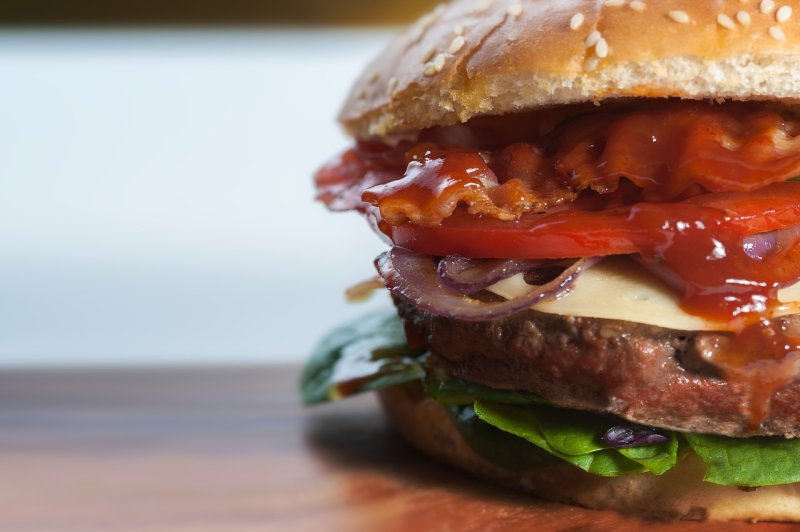Starting Monday, all restaurants, including pizza parlors, with 20 or more locations are required to post calorie counts for the food they serve, according to new regulations from the Food and Drug Administration. Photo by Pexels/Pixabay
May 7 (UPI) -- The U.S. Food and Drug Administration starting Monday is requiring restaurants and other food outlets with 20 or more locations to post calorie counts.
The labeling rule was a provision included in the Affordable Care Act, also known as Obamacare, in 2011 but has been delayed three times at the urging of the restaurant industry.
President Donald Trump's FDA commissioner, Scott Gottlieb, has decided to institute the regulations.
"Consumers will be able to walk into any large chain restaurant and other chain establishments in the country and know, at a glance, how many calories are in the foods a restaurant offers," Gottlieb said in a blog post last week. "Surveys show consumers overwhelmingly want this information. And many use it to improve their diets and health."
Gottlieb said studies have shown that smart menu labeling reduces the average number of calories ordered 30 to 50 calories each visit.
"That may sound like a small amount," he said. "It comes out to less than a cookie a day. But over a year, based on that sort of reduction, you could end up consuming 10,000 to 20,000 fewer calories, making you 3 to 5 pounds slimmer."
Between 2013 and 2016, the obesity rate among adults age 20 and over increased by 13.9 percent, from 33.9 percent to 38.6 percent, according to the federal government. The Healthy People 2020 goal is a 10.1 percent improvement.
The rules apply to food sold by restaurants, gas stations, coffee houses and movie theaters.
"I know not everyone has supported restaurant menu labels," Gottlieb said. "Not every chain wants to display calorie information. But consumers want this data. And FDA has taken steps to make it easy for manufacturers and restaurants to provide this information in cost-effective ways already found in many chains. In addition, firms won't need to deal with a patchwork of different requirements for calorie labeling across the country."
Andrew Puzder, CEO of fast-food chain Carl's Jr., who was also Trump's first choice for secretary of labor, told the Washington Examiner in 2011 the rule is a "nanny-state" regulation for a nonexistent problem.
The American Pizza Community also opposes the regulations, calling the regulation one-size-fits-all and saying that it proposes a specific challenge for the pizza industry because there are so many options.
"Pizza's unique ordering variations create countless combinations, making it difficult to accurately deliver information on printed menu boards and costly to maintain," Tim McIntyre, chairman of APC and a communications executive at Domino's Pizza, said in a press release. "Ninety percent of our customers place orders online or over the phone."
He added the group supports the intent behind menu-labeling laws, but the regulations can be costly for small businesses.
Gottlieb, however, counters that the rules are not rigid and can be adaptable to pizzerias, which can list a calorie range for menu options.
"When it comes to build-your-own foods, like choose-your-topping pizzas, calorie ranges can be used to make the various combinations fit on a standard-size menu board," Gottlieb said. "We know that prepared food can diverge from one entree to the next. So we allow room for that variability."
Last week, the FDA also delayed by 18 months a requirement for manufacturers to update nutritional facts and serving sizes on food packaging labels. Rules for manufacturers with $10 million or more in annual food sales is being pushed from July 26, 2018, to Jan. 1, 2020. Manufacturers with less than $10 million in annual food sales had their deadlines delayed from July 26, 2019, to Jan. 1, 2021.
"This extension on the Nutrition Facts label regulation will help ensure that we provide the food industry with guidance to help them modernize their Nutrition Facts labels and that industry has sufficient time to complete and print updated Nutrition Facts labels," Gottlieb said in a statement.















